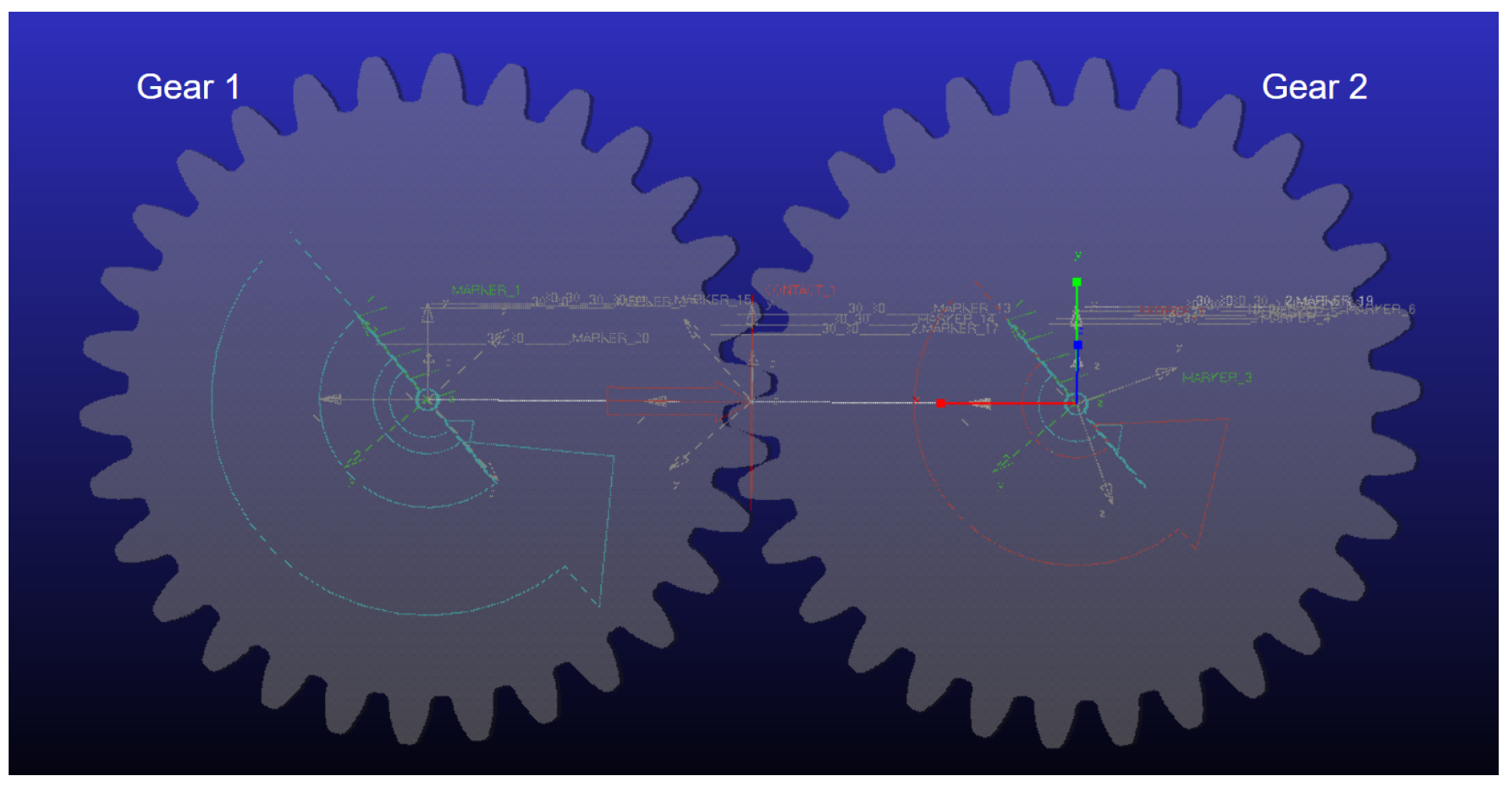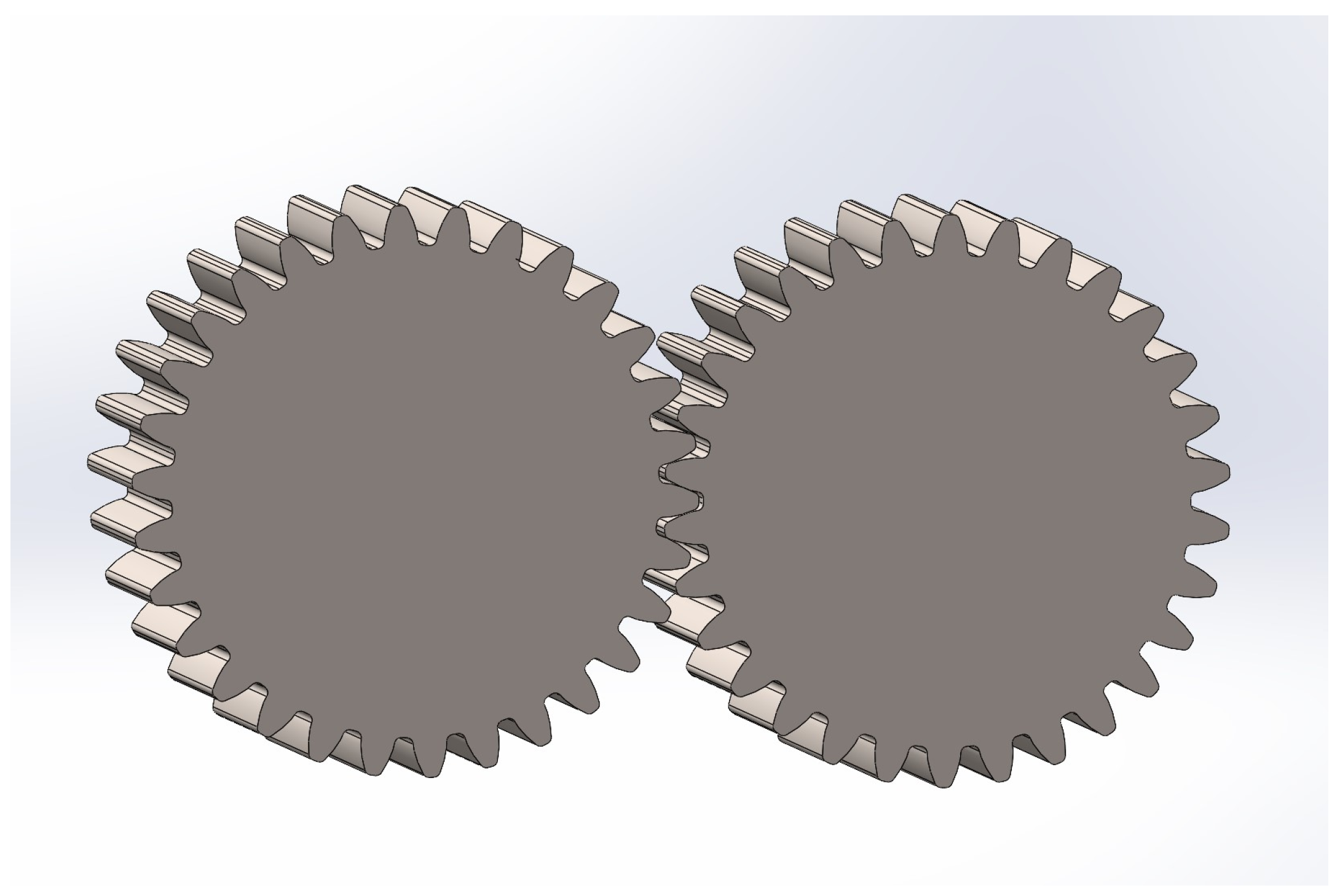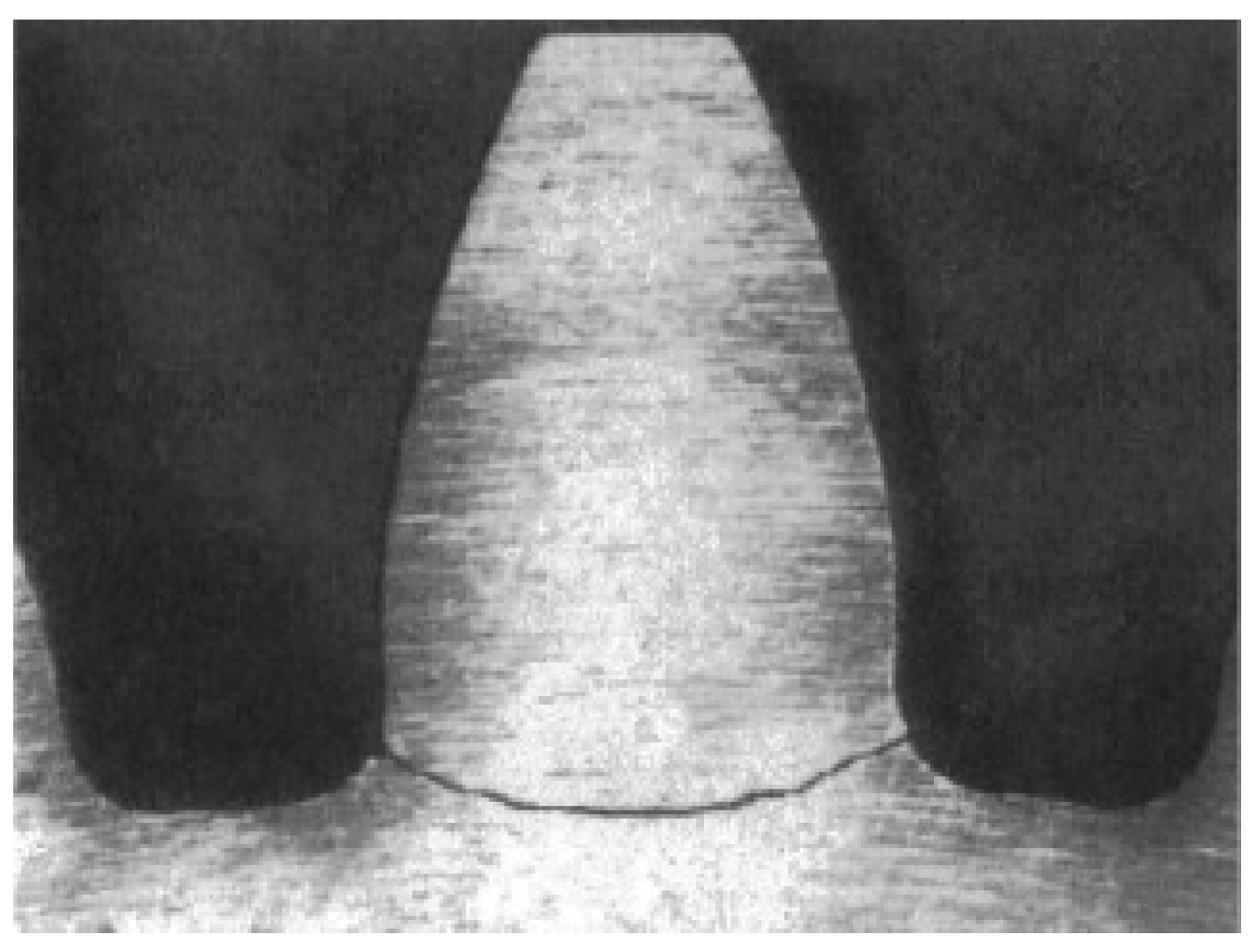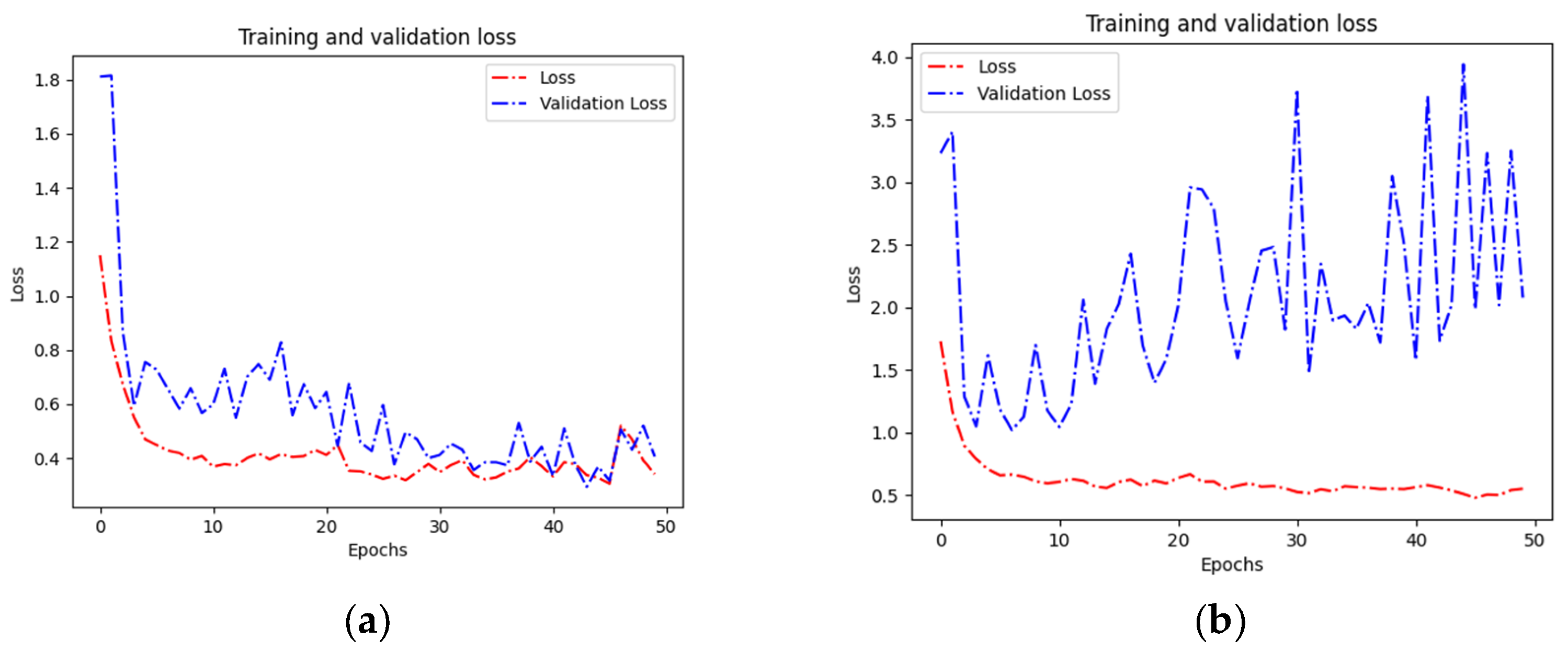Research on Fault Diagnosis of Gear Transmission Systems Based on Dynamic Transmission Error †
Abstract
1. Introduction
2. Problem Description
3. Fault Diagnosis of Gear Transmission Systems Based on Dynamic Transmission Error
3.1. Build Gear Model
3.1.1. Normal Gear
3.1.2. Crack Gear
3.1.3. Pitting Gear

3.2. Adams Simulation to Obtain Data
3.2.1. Transmission Gear Model Establishment

| Type of Joint | First Component | Second Component |
|---|---|---|
| Rotational joint | Gear 1, Gear 2 | Ground |
| contact | Gear 1 | Gear 2 |
3.2.2. Simulation Calculation
3.3. Fault Diagnosis Using 1DCNN Model
4. Patents
Author Contributions
Funding
Institutional Review Board Statement
Informed Consent Statement
Data Availability Statement
Conflicts of Interest
References
- Ji, N. Research on Gearbox Fault Diagnosis Technology Based on Vibration Signals. Master’s Thesis, North China University of Water Resources and Electric Power, Zhengzhou, China, 2020. (In Chinese). [Google Scholar] [CrossRef]
- Tang, Y. Simulation Study of Gear Fault in Metallurgical Crane Reducer Based on ADAMS. Master’s Thesis, Anhui University of Technology, Ma’anshan, China, 2021. (In Chinese). [Google Scholar] [CrossRef]
- Ma, H.; Song, R.Z.; Pang, X.; Wen, B. Time-varying mesh stiffness calculation of cracked spur gears. Eng. Fail. Anal. 2014, 44, 179–194. [Google Scholar] [CrossRef]
- Lewicki, D.G.; Ballarini, R. Effect of Rim Thickness on Gear Crack Propagation Path. J. Mech. Des. 1997, 119, 107229. [Google Scholar] [CrossRef]
- Tan, C.K.; Irving, P.; Mba, D. A comparative experimental study on the diagnostic and prognostic capabilities of acoustics emission, vibration and spectrometric oil analysis for spur gears. Mech. Syst. Signal Process. 2007, 21, 208–233. [Google Scholar] [CrossRef]
- Liang, X.H.; Zhang, H.S.; Liu, L.B.; Zuo, M.J. The influence of tooth pitting on the mesh stiffness of a pair of external spur gears. Mech. Mach. Theory 2016, 106, 1–15. [Google Scholar] [CrossRef]
- Ahmad, I.; Siddique, B.; Islam, M.A.; Haq, Z.U.; Niu, Z.; Waqas, M.M.; Yang, Q.; Qiu, Z. Development and evaluation of digital twin model for rack and pinion drive vegetable seedling transmission device using Adams/MATLAB co-simulation. Simul. Model. Pract. Theory 2025, 142, 103132. [Google Scholar] [CrossRef]









| Driving Gear | Driven Gear | |
|---|---|---|
| Modulus (mm) | 2 | 2 |
| Pressure angle (°) | 20 | 20 |
| Head clearance coefficient | 0.25 | 0.25 |
| Addendum coefficient | 1 | 1 |
| Number of teeth | 30 | 30 |
| Tooth width (mm) | 30 | 30 |
| Network Layer | Kernel Size | Stride | Channels | Data Size |
|---|---|---|---|---|
| Input Layer | - | - | - | 12,000 × 1 |
| Conv1 | 3 | 1 | 4 | 12,000 × 4 |
| MaxPool1 | 3 | 2 | - | 6000 × 4 |
| Conv2 | 3 | 1 | 8 | 6000 × 8 |
| MaxPool2 | 2 | 2 | - | 300 × 8 |
| Flatten | - | - | - | 24,000 |
| Dense | - | - | - | 32 |
| SoftMax | - | - | - | 3 |
Disclaimer/Publisher’s Note: The statements, opinions and data contained in all publications are solely those of the individual author(s) and contributor(s) and not of MDPI and/or the editor(s). MDPI and/or the editor(s) disclaim responsibility for any injury to people or property resulting from any ideas, methods, instructions or products referred to in the content. |
© 2025 by the authors. Licensee MDPI, Basel, Switzerland. This article is an open access article distributed under the terms and conditions of the Creative Commons Attribution (CC BY) license (https://creativecommons.org/licenses/by/4.0/).
Share and Cite
Wang, S.; Wang, J.; Ren, H. Research on Fault Diagnosis of Gear Transmission Systems Based on Dynamic Transmission Error. Eng. Proc. 2025, 111, 3. https://doi.org/10.3390/engproc2025111003
Wang S, Wang J, Ren H. Research on Fault Diagnosis of Gear Transmission Systems Based on Dynamic Transmission Error. Engineering Proceedings. 2025; 111(1):3. https://doi.org/10.3390/engproc2025111003
Chicago/Turabian StyleWang, Siliang, Jianlong Wang, and Haonan Ren. 2025. "Research on Fault Diagnosis of Gear Transmission Systems Based on Dynamic Transmission Error" Engineering Proceedings 111, no. 1: 3. https://doi.org/10.3390/engproc2025111003
APA StyleWang, S., Wang, J., & Ren, H. (2025). Research on Fault Diagnosis of Gear Transmission Systems Based on Dynamic Transmission Error. Engineering Proceedings, 111(1), 3. https://doi.org/10.3390/engproc2025111003






